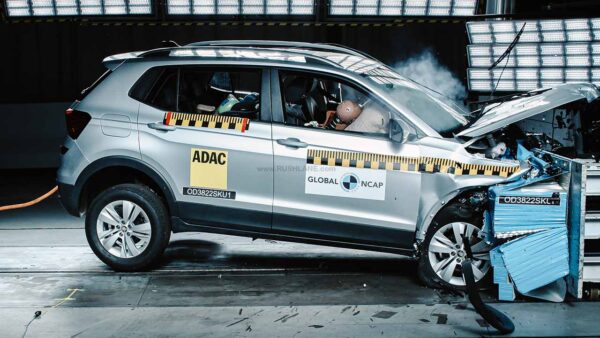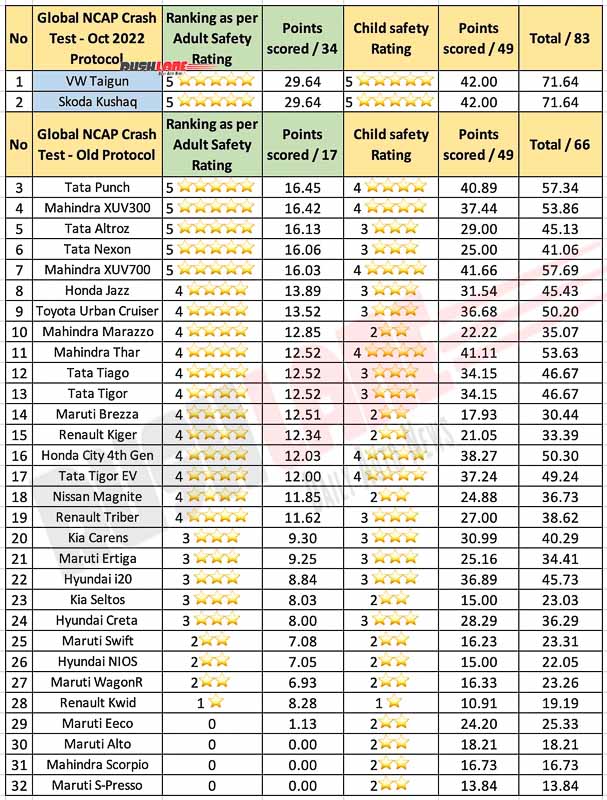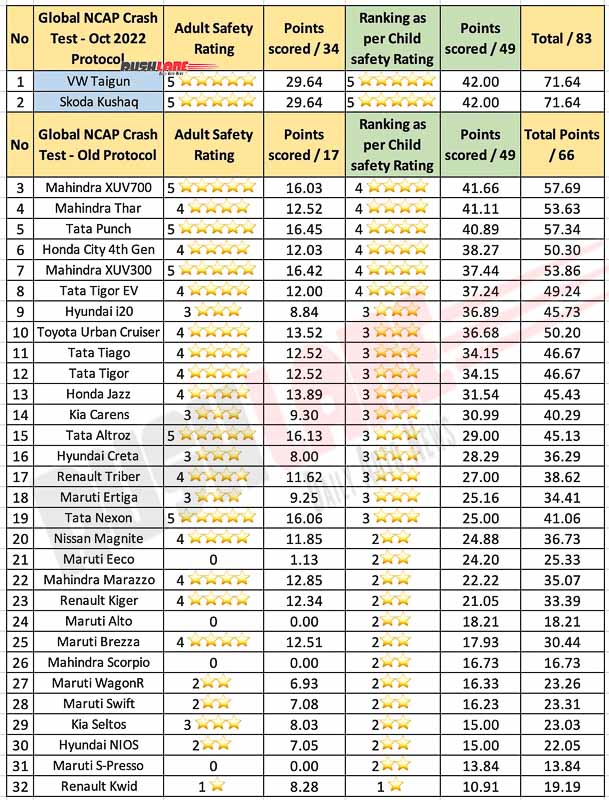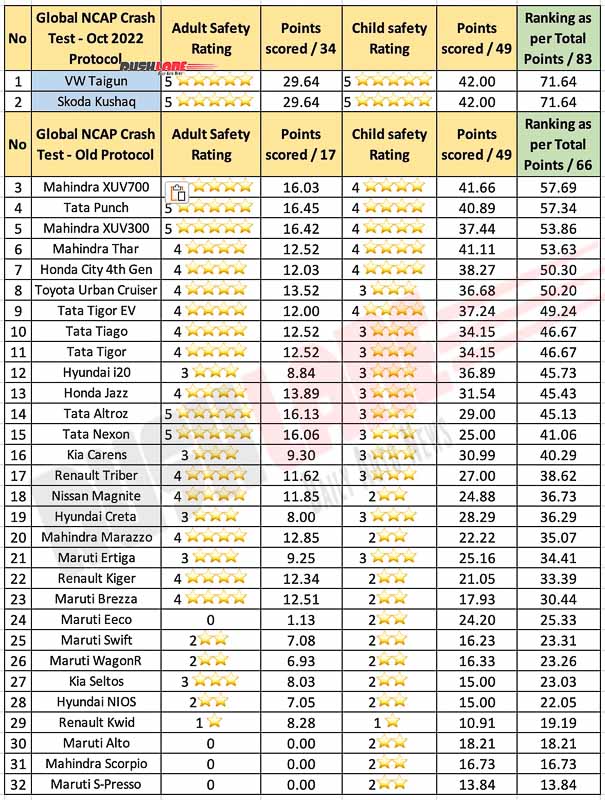Under updated GNCAP protocols, active safety systems are given a lot of merit and consideration over the previous protocols

Recently, GNCAP conducted a crash test on Taigun and Kushaq, both scoring 5-stars. When compared to its rivals, Taigun and Kushaq fared excellently. Its main rivals Creta and Seltos score 3-stars, while Astor, Grand Vitara and HyRyder are not tested yet.
VW Taigun and Skoda Kushaq were tested under updated GNCAP protocols which differ from the ones that were followed before July 2022. So, what exactly are updated GNCAP protocols? How do they differ from the ones that were in effect before? Are the new protocols better? Has GNCAP inched closer to Euro NCAP? Let’s seek answers to these questions with a closer look.
Updated GNCAP Protocols – Adult Occupant Safety
Right off the bat, we can say that new protocols are significantly more stringent than old ones. Previous protocols prioritised frontal crash tests on a deformable barrier at 40% overlap at 64 km/h. An additional side crash test would only be performed on vehicles aiming for 5-stars or volunteered. That too without child dummies.
New protocols dictate that side crash tests as a standard affair, irrespective of aiming for 5-stars or volunteered. That too, with child dummies as mandatory in this test. A vehicle that fails with 0-stars in frontal crash test, is not obligated for side crash tests. For both frontal and side crash tests, adult and child dummies are evaluated compulsorily.

Seatbelts are paramount, no matter where one is seated. 2 points are reserved for seatbelt reminders, of which 0.5 points are awarded to every seatbelt reminder. In order to score 2 points, a car needs to have seat belt reminders in 4 seats. Under updated GNCAP protocols, active safety systems are given a lot of merit and consideration. ESC has to be offered as standard on its highest-selling variant or the rest of the variants combined in terms of sales. Only then, a vehicle will be eligible for a 5-star rating.

Pole side impact is also given a lot of importance. With this test, side head impact is calculated with a pole impact test. To perform this test, updated GNCAP protocols mandate fitment of some kind of head protection system. Pedestrian protection system has to be standard fitment for a vehicle to score 5-stars. Manufacturers should provide a pass/fail certificate by either UN127 or GTR9.
Old vs New Rating
The grading system still maxes out at 5 stars. Frontal crash tests have 16 points reserved for adult occupant protection and 49 points for child occupant protection. Side crash tests have 16 points for adult occupant protection, however, we now have 2 points for seatbelt reminders.

Old crash test rating cannot be compared with new crash test rating. Meaning, if a car had got 5 star rating under old testing, it cannot be compared with the 5 star rating under the new testing. To differentiate the two, Global NCAP will give yellow stars rating for cars that were tested under new system – for both adult and child occupants. In the older system, the adult rating was indicated via blue stars while child rating was indicated via green stars.
Updated GNCAP protocols have become more stringent when compared to old ones. That being said, they are likely to get more and more stringent as time goes by and get closer and closer to Euro NCAP standards. With ADAS systems getting popularised, GNCAP will update its protocols in the future, if necessary.

